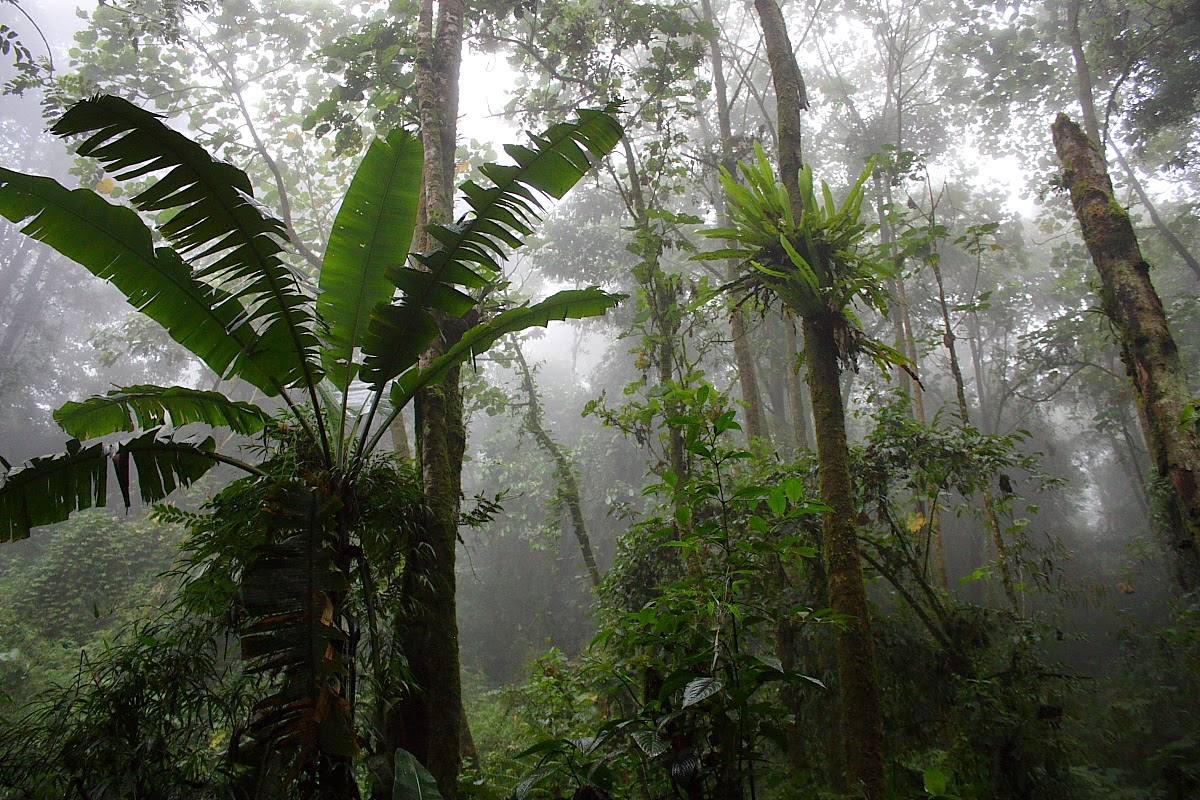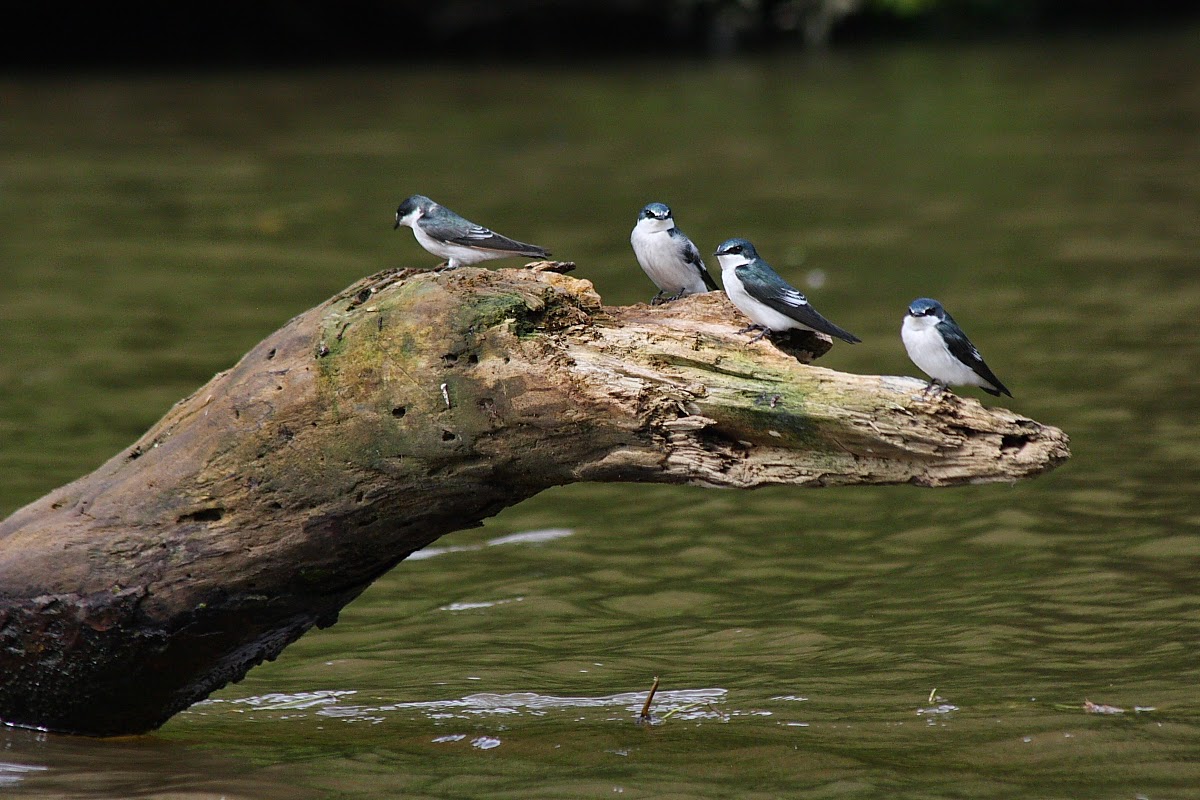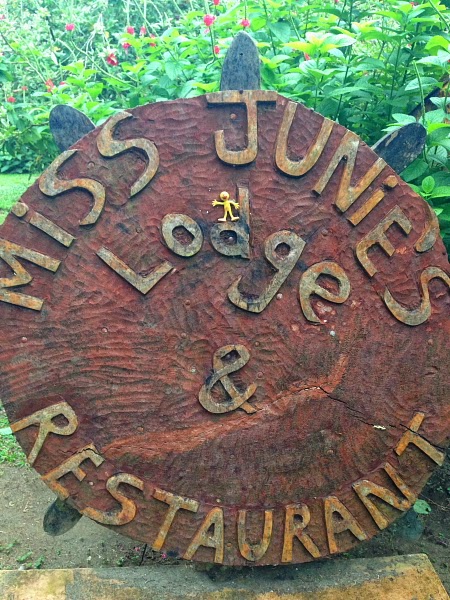Costa Rica is a country in Central America, bordered by Nicaragua,
Panama, the Caribbean Sea and the Pacific Ocean. The population is ~5 million
people with 1.5 million living in the capital of San Jose and about 70% of the
population living in the central valley. Agriculture, mainly coffee and
bananas, and tourism are the staples of the economy. In 1948 the army was abolished
and the military budget distributed to education, healthcare, and environmental
protection. (How cool would it be if more countries followed their example??)
While Costa Rica occupies only 0.1% of the world’s landmass, it possesses 5% of
the world’s biodiversity. This amazing biodiversity can be accredited to the variety
of ecosystems and 12 climatic zones found in this postage stamp-sized country;
so many niches, so many species. With all this in mind, we packed our bags and
headed off for hopefully some sunshine, animal spotting and hammock time!
River and forest in La Paz Waterfall Gardens
Traditional cart for carrying freshly picked coffee beans
Waterfalls at the gardens
Pura Vida!
You will hear this expression a lot
in Costa Rica. Directly translated it means ‘the pure life’ and is the
equivalent of Hakuna Matata, live with no worries. Used as a greeting, a
farewell, a statement of agreement, a synonym for excellent, and pretty much
everything inbetween; Pura vida is more than an expression, it is a Costa Rican
way of life. Ticos strive to live a laid-back life, one low on stress and full
of happiness. They must get it right since Costa Rica regularly ranks in the
top spots for happiest people on earth. We certainly felt more relaxed after 3
weeks of living the good life.
Aiming for a planning and stress-free holiday, we decided to join an
Intrepid tour covering most of the country. We arrived in San Jose on the
Thursday evening giving us two days to explore San Jose and surrounds before
the tour officially began on Saturday evening. The game plan was a full day
tour on Friday and city exploring on Saturday.
The full day tour took us to Doka Coffee Estate, Poas Volcano and La Paz
Waterfall Gardens. At Doka, a small family run coffee farm, the process of making
coffee, from the planting to the roasting of the beans, was explained, with
samples of course. It was here that we also had our first beans and rice for
breakfast! Ticos eat beans and rice for breakfast, lunch and dinner. Seriously,
they do. Poas Volcano is one of the largest and most active volcanoes of Costa
Rica. Poas has two summit crater lakes, one of which is one of the world’s most
acidic natural lake with a near 0 pH. It is quite interesting to see how
vegetation grows normally upwind of the acidic lake but a black landscape
covers the downwind slopes where nothing grows. La Paz Waterfall Gardens was
the last stop of the day but probably our favourite. The garden has paths
through rain forest dotted with waterfalls and is also an animal rescue centre.
We loved the butterfly garden, the hummingbird garden, the ranarium (frogs), the
opportunity to see some jungle cats we probably wouldn’t see out in the forest
in the coming weeks, and our first up close encounter with toucans!
Coffee beans drying in the sun
The final product, roasted and ready to be enjoyed
The steaming acid crater lake of Poas Volcano
Justin getting up close and personal with a chestnut-mandibled Toucan, we'll call him Sam
In the butterfly garden
We really enjoyed watching these beautiful and amazing birds zip around us in the hummingbird garden
A pacing jaguar
Over the weekend we had time to explore San Jose and honestly, two days was
probably too much time, there really isn’t much to do or see in San Jose. We
explored Central Avenue, the small parks around town, the large park at the
edge of town and the Mercado Central. The cleanest and most hygienic market we
have seen since moving to South America, San Jose’s Central Market is the only
one I would consider eating at. It also has a mish-mash of household goods and
curios on offer. Our favourite was the small parks around town, they were very
vibey on Saturday with hula hoops and various games set out for everyone to
enjoy undercover from the rain which was sure to follow in the afternoon.
Playing checkers in the park (Bron lost...)
And then it was time to start exploring for real! First up: Tortuguero.
Despite its remote location (we took two public busses and a canal boat to get
there), it is one of the most visited national parks in Costa Rica. With the
Caribbean Coast on one side of the park and Tortuguero River and a system of
canals on the other, the biodiversity here is huge due to the presence of
eleven different habitats. Tortuguero means ‘land of turtles’ and the beaches are
key nesting sites for four species of sea turtle. Tortuguero town itself is one
dusty street long with nature literally bursting into the town. We had 2 nights
in Tortuguero and stayed at the lovely Miss Junie’s Lodge on the edge of town
looking onto the river and backing straight onto the beach. First up was a swim
in the warm Caribbean Sea and later that night one of the highlights of the
trip, a turtle watching night tour.
Canal boat to get to Tortuguero village
Camera at the ready!
Resting fruit bats
Great Egret
Cool waterbird
Please forgive us for not knowing the names of all the birds!
Thousands of turtles come to lay their eggs on the beaches of Tortuguero
every year. While we were there it was Green Turtle nesting season. The beaches
are closed to people from sunset at 6 pm so as not to disturb nesting
turtles. The turtles nest much higher up the shoreline than we expected them
to, on the edge where the vegetation starts. The female first digs a body pit
using mostly her front flippers which takes about 40 minutes, and then a second
smaller hole for the eggs with her back flippers. After laying her eggs, she
covers them with sand using her back flippers. Finally, she camouflages the
nest with sand using her front flippers to distract and deter predators;
however, she doesn’t fill in the body pit and hundreds of these can be seen almost
in a row on the beach in the daylight. The same turtle will return to lay eggs
3-5 times during nesting season, every 3 weeks or so. During this time she can
lay up to about 1000 eggs. Of these, one turtle will reach adulthood. That’s a
pretty low survival rate for such an energy demanding task. Females will nest
once in 3 years but males can breed every year. Turtles are very vulnerable
while nesting. Jaguars use nesting as an opportunity to attack turtles but they
only eat the soft parts under the neck. We saw a few turtle carcasses on the
beach; it seems such a waste for such a small piece of meat.
During our turtle watching tour we saw a turtle lay her eggs, cover the
eggs, camouflage the nest, and return to the ocean. Nesting is an energy demanding
task and by the end the female turtle is very tired. The turtle we saw return
to the ocean was so tired, she got a bit confused finding the way back and did
some circles along the way. Nesting also takes a long time; we saw a different
turtle in each stage of nesting otherwise the tour would take hours. We were
amazed at the size of the turtles, more than a metre long; according to our
guide these were still young with some growing still to do. The tour is
conducted completely in the dark since turtles are sensitive to light and will
return to the ocean without laying their eggs if disturbed in anyway. Therefore
light, phones and photos are strictly prohibited. We really enjoyed this tour and
feel privileged to have seen a turtle nest and lay eggs. We were sad not to see
any hatchlings though. Eggs incubate for about 60 days and since nesting season
started late this year none of the nests were ready to hatch yet. We hope to
see this one day in the future though.
The Caribbean Beach right behind Miss Junie's
Our sunrise shoot on the last morning was thwarted by clouds
The friendly pooch from Miss Junie's kept us company on our walk
The next day saw an early start partly due to the sun and singing birds,
and partly because we had an early morning canal boat tour with our group. We
spent a few hours in a paddle boat along the canals with two local guides.
Apparently it was a quiet morning for wildlife but we saw many birds and some
animals. After lunch we all went for a walk together in Tortuguero National
Park and back along the beach followed by a well-earned beer for the guys and
ice cream for the girls. During the boat trips and the walk in the forest we
saw lots of cool birds including many water birds, caimans, spider monkeys,
howler monkeys, sloths, Jesus lizzards, basilisk lizzards, iguanas, a blue
jeans frog, and resting bats. We really enjoyed our time in Tortuguero and
highly recommend it to anyone visiting Costa Rica. Take plenty of mosquito
repellent and sunscreen, it is seriously hot and humid!
Our Intrepid group and guide Bill ready for a canal tour
Wildlife spotting with our Intrepid guide Edson (white shirt) and local guide (red shirt)
River and canals at Tortuguero
Basking Iguana
Female basilisk lizzard
Submerged caiman
Spider monkey! (Bron's favourite)
White faced capuchin monkey
Walking in Tortuguero National Park
From Tortuguero we made our way to Sarapiqui by private transfer (read:
with aircon). We were really fortunate to stop and see two sloths along the
way. We could only see the back of the first one high up in the tree so all it
looked like was a furry blob in a tree. We resigned ourselves to the
probability of only these kinds of views of these beautiful creatures. The
second sloth we saw changed that. This two-toed sloth had nestled itself in the
v of a tree at eye level. Such a perfect sighting and photo opportunity. Shame,
it must have been quite bewildered with 10 humans circling it. This was
definitely one of our highlight sloth moments.
Chilling two-toed sloth in the v of a tree
In Sarapiqui we stayed with the wonderful Alex and his family at Posada
Andrea Cristina Bed and Breakfast. Alex and his son hand-made and built most of
the beautiful wooden chalets, the two treehouses and some of the furniture of
the BnB. A great guy and genuine nature lover, we felt so welcomed and at home.
Favourite activities at Alex’s place were reading in the hammock on the deck of
our beautiful free-standing honeymoon suite chalet while the rain poured down
and frog spotting around the pond, in the rain. This was our first sighting of
the red eye tree frog, the symbol on all of Costa Rica’s tourism advertising.
The one afternoon it rained so much the guys staying in the treehouse had a
small river running down the tree, it was pretty hectic. We weren’t exactly
busy in Sarapiqui but chill out time when the heavens opened helped to give the
holiday balance, we are very good at over-filling holidays and not always
resting enough.
Our beautiful chalet in Sarapiqui
Hammock time!
The gorgeous red eyed tree frog
Our only real activity in Sarapiqui was a guided walk at La Selva
Biological Station. Internationally recognised as one of the most productive
field stations for research on tropical forests, La Selva is a protected area
of 1500 ha of low-land tropical rain forest with the goal of preserving intact
forest and providing lab facilities for tropical research and education. Our
guide was really knowledgeable and kitted out with a serious telescope and
binoculars. The most wildlife we saw at one time on this holiday was during
this walk. We highly recommend at least one guided walk in the forest, you see
so much more since the guides know where to look, and have cool telescopes. Some
of the wildlife we saw include spider monkeys doing some cool acrobatics, blue
jeans frogs, toucans, lizards, loads of birds, bush pigs, a drenched moss
covered sloth, cool plants and loads of fungi. This walk was one of the
highlights of our trip and we highly recommend it if you are in the area.
La Selva
Collared Aracari Toucan
Blue jeans frog, because he is wearing blue jeans =)
Also known as the strawberry poison dart frog
And then suddenly one week of our two week tour was over, just like that!
More about our adventures in La Fortuna, Monteverde and Manuel Antonio
next time!
























































































